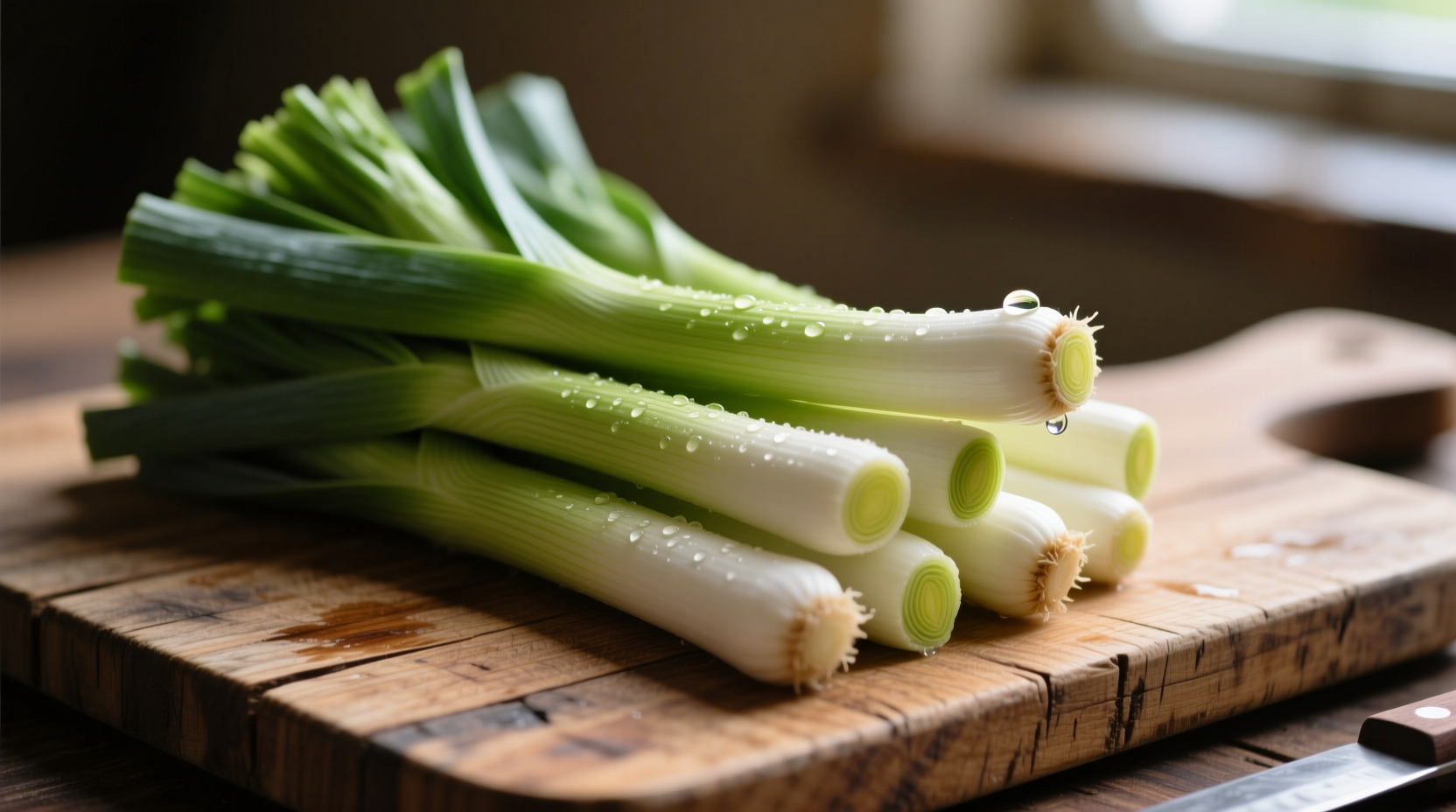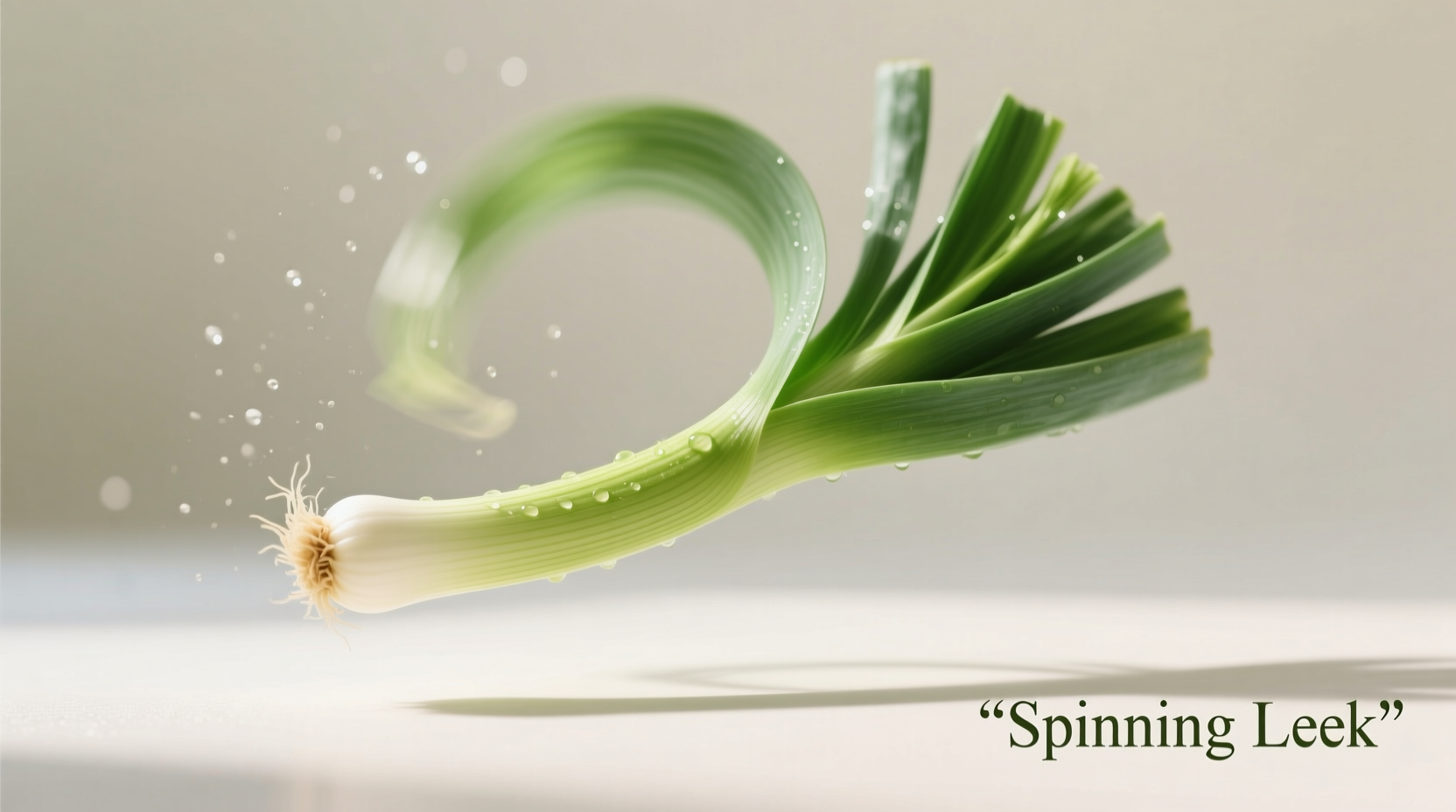"Spinning leek" is not a recognized culinary term or vegetable variety. This article clarifies common misunderstandings about leeks, explains proper preparation techniques, and identifies what you might actually be searching for when encountering this confusing phrase.
Many home cooks encounter the puzzling term "spinning leek" while searching for cooking instructions or vegetable information. If you've landed here searching for spinning leek techniques or varieties, you're not alone—but you're likely searching for something that doesn't actually exist in culinary practice. This comprehensive guide will clarify the confusion, explain what leeks really are, and provide practical information you can actually use in your kitchen.
What Exactly Is a Leek?
Leeks (Allium ampeloprasum var. porrum) belong to the same family as onions, garlic, and chives, but have a milder, more delicate flavor profile. Unlike their pungent relatives, leeks offer a subtle sweetness that enhances dishes without overwhelming other ingredients. These cylindrical vegetables feature white.lower portions that gradually transition to dark green tops, with each section offering distinct culinary applications.
According to the USDA National Nutrient Database, leeks provide significant nutritional benefits including vitamin K, vitamin A, and manganese, while containing only 31 calories per 100 grams. Their unique growing pattern—achieved through "hilling" soil around the stalk—creates the long white section prized by chefs for its tender texture.
Why "Spinning Leek" Doesn't Exist
The term "spinning leek" appears to stem from several common misunderstandings:
- Misheard terminology: Many confuse "spring leek" (simply young, tender leeks harvested in early season) with "spinning leek"
- Translation errors: Non-native English speakers sometimes mistranslate regional terms
- Autocorrect failures: "Spring" frequently gets altered to "spinning" in digital communications
- Confusion with techniques: Some mistake "spinning" as a preparation method rather than recognizing it as an error
| Actual Term | Meaning | Common Misunderstanding |
|---|---|---|
| Spring leek | Young, tender leeks harvested in early season | "Spinning leek" - no such variety exists |
| Leek spinning | No culinary technique by this name | Mistaken belief that leeks require special spinning preparation |
| Scallion/spring onion | Different allium variety often confused with young leeks | Assuming "spinning" refers to scallion preparation |
Leek Evolution: A Brief Historical Timeline
Understanding leeks' historical context helps clarify why certain terms persist while others emerge as misconceptions:
- 2,000+ BCE: First cultivated in Mesopotamia and Egypt, where they were valued for medicinal properties
- Roman Era: Introduced to Britain, becoming a staple food item (Cornell University's Vegetable Growing Guide documents this historical spread)
- Medieval Period: Recognized as one of the three national emblems of Wales
- 16th-18th Centuries: "Hilling" technique developed to create longer white sections
- 20th Century: Commercial varieties standardized, with confusion emerging between spring leeks and mature varieties
- Present Day: Digital communication errors create terms like "spinning leek" through autocorrect and mishearing
Practical Leek Selection and Preparation
Now that we've clarified the spinning leek misconception, let's focus on practical information you can actually use. When selecting leeks, look for firm, straight stalks with crisp blue-green leaves and bright white bases. Avoid those with yellowing or slimy spots, which indicate age or improper storage.
Proper cleaning is crucial—leeks often contain trapped soil between their layers. The most effective method involves:
- Slice off root end and dark green tops (save for stock)
- Cut vertically through the white base
- Submerge in cold water, separating layers to release trapped dirt
- Rinse thoroughly under running water
- Dry before cooking to ensure proper sautéing

Understanding Leek Varieties and Their Uses
Leeks come in several varieties, each suited to different culinary applications. The confusion around "spinning leek" often stems from not understanding these distinctions:
- Spring leeks: Thin, tender varieties harvested March-May, perfect for salads and quick sautés
- Summer leeks: Medium thickness with balanced white/green ratio, ideal for soups and stews
- Winter leeks: Thick, robust varieties that withstand cold temperatures, excellent for roasting
- Giant leeks: Extra-large varieties specifically bred for substantial white sections
According to research from the University of California Agriculture and Natural Resources, proper storage significantly extends leek freshness. Keep them unwashed in the refrigerator's crisper drawer for up to two weeks, or freeze blanched slices for longer preservation.
Common Leek Preparation Mistakes to Avoid
While there's no such thing as "spinning leek" preparation, several genuine mistakes commonly occur when handling these vegetables:
- Skipping the thorough wash: Results in gritty texture that ruins dishes
- Discarding green tops: The dark green portions make excellent stock when simmered properly
- Overcooking: Leeks become mushy when cooked beyond their ideal 8-12 minute window
- Using improper heat: Medium-low heat preserves sweetness without burning
- Confusing with scallions: Leeks require longer cooking times than their thinner allium cousins
Delicious Ways to Use Leeks in Your Cooking
Now that you understand what leeks really are and how to prepare them properly, here are three reliable applications that showcase their unique flavor:
- Classic vinaigrette base: Finely minced raw leeks add subtle onion flavor to dressings without overpowering acidity
- Caramelized leek tarts: Slow-cooked until golden brown, they create sophisticated appetizers or side dishes
- Creamy leek and potato soup: A French bistro staple that highlights leeks' natural sweetness
Professional chefs at the Culinary Institute of America recommend starting leeks in cold butter or oil, allowing gradual flavor development without burning. This technique maximizes their natural sugars while maintaining structural integrity during cooking.











 浙公网安备
33010002000092号
浙公网安备
33010002000092号 浙B2-20120091-4
浙B2-20120091-4